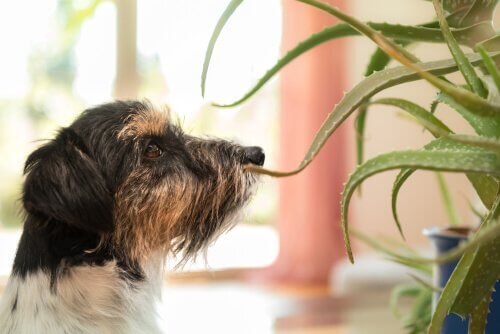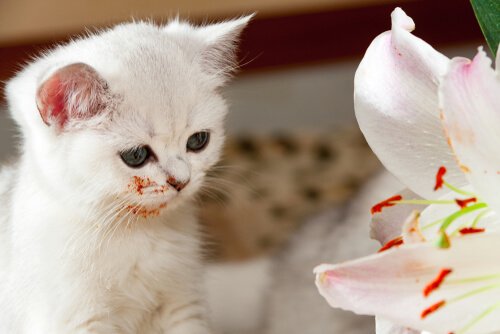The Most Poisonous Plants For Pets


Written and verified by the biologist Paloma de los Milagros
There are some combinations of house plants and pets that don’t go well together, because your pets could eat those plants without you realizing. This makes it especially important to know about some of the most poisonous plants for pets.
Food poisoning is one of the most common issues veterinarians see every day. One of the main reasons for this is that many owners don’t know that some of the plants they keep in their home are actually very poisonous.
Cats might occasionally chomp on a leaf or a flower, but dogs are the real danger here. They often turn to plants to relieve some of their discomfort, also known as “purging.” That’s usually harmless, but they’ll eat any plant they find, and that’s the problem. If they eat the wrong thing, it could be extremely dangerous for them.
The most poisonous plants for pets, in and out of the home
Aloe vera
Most of the plants in the Aloe genus have a toxic sap called “aloe latex,” which you can tell by its yellow color. Unlike aloe gel, which has healing properties, this latex can actually cause skin and nasal irritation, intestinal problems, and even heart arrhythmia.

Anthurium, or flamingo flower
This is one of the single most poisonous plants for pets because both the flower and stem contain calcium oxalate. Part of what makes it so dangerous is how enticing they are, especially to cats. Ingesting it can cause facial swelling, tongue paralysis, and vomiting.
Tulip, daffodil, and hyacinth bulbs
Because of their shape, when the bulbs are in easy reach, either in vases with water, or buried in the ground, your pets could try and eat them. If that happens, your pet might experience gastroenteritis or skin irritation. This happens because of the toxins in these plants, including the alkaloids lycorine and galantamine.
Calla lily
Like anthurium, this plant produces calcium oxalate, especially in the flowers. This means that most of the symptoms associated with ingesting it have to do with the digestive system, along with the potential of facial swelling and tongue paralysis.
Ceriman
This is a common plant in homes and offices, but it’s actually very toxic, especially its large green leaves. It causes nasal irritation, excessive salivation, itching, and facial swelling.
Poinsettia
This plant also produces a latex that can cause irritation, itching, and several intestinal problems, simply from coming into contact with it.
Lily
Just about every species and variety in the genius Lilium is highly toxic in its leaves, flowers, and even pollen in some cases. They can cause some relatively minor intestinal problems in dogs, but they’re genuinely dangerous for cats.
In fact, the Food and Drug Administration (FDA) has actually warned that cats can experience immediate kidney failure if they ingest it.

Ivy
Ivy can cause allergic reactions with nasal irritation, itchiness, or even respiratory failure in serious cases. It’s normal to see your dog experience minor symptoms of exposure because ivy is so common in gardens and parks.
Black nightshade
This wild plant, recognizable by its white petals and berry-like fruits, is neurotoxic in every part of its structure. Some of the most common symptoms include vomiting, pupil dilation, and general weakness.
The list of plants that can be poisonous for your pets could go on forever. That’s partly because of how many plants there are in the world, but also because it varies from pet to pet.
In general, anything that secretes a latex, or has ornamental flowers or fruits like berries (and we haven’t even mentioned cacti) is probably dangerous. So, the best advice we can give you is to do a bit of research yourself before you buy any house plants, and to watch over your pet whenever you’re outside with it.
All cited sources were thoroughly reviewed by our team to ensure their quality, reliability, currency, and validity. The bibliography of this article was considered reliable and of academic or scientific accuracy.
- ASPCApro. 17PlantsPoisonoustoPets. (s.f). Recuperado de https://www.aspcapro.org/resource/shelter-health-poison-control/17-plants-poisonous-pets
- Ecoinventos. (2018). Las 22 plantas comunes más tóxicas para nuestras mascotas. Recuperado de https://ecoinventos.com/plantas-toxicas-mascotas
This text is provided for informational purposes only and does not replace consultation with a professional. If in doubt, consult your specialist.